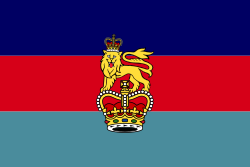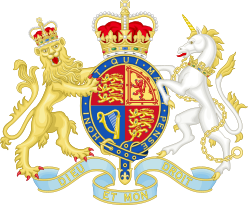Selwyn Lloyd

John Selwyn Brooke Lloyd, Baron Selwyn-Lloyd (* 28. Juli 1904 in West Kirby bei Liverpool; † 17. Mai 1978 in Oxfordshire) war ein konservativer britischer Politiker.
Werdegang
Selwyn Lloyd war der Sohn von John Wesley (Jack) Lloyd and Mary Rachel Warhurst. Er besuchte die Leas School in Hoylake, das Fettes College in Edinburgh und das Magdalene College in Cambridge.
1930 wurde er von der Gray’s Inn zur Anwaltschaft berufen, gründete in Liverpool eine Anwaltskanzlei und wurde vor dem Hoylake Urban District Council zugelassen. Nachdem er 1929 erfolglos als liberaler Kandidat für das Parlament in Macclesfield kandidiert hatte, konzentrierte er sich zunächst auf seine juristische Laufbahn. 1931 verließ er die Liberalen und schloss sich den Konservativen an. Von 1932 bis 1940 war er Gemeinderatsmitglied in Hoylake.
Als der Zweite Weltkrieg ausbrach, wurde er zur Royal Horse Artillery eingezogen, wo er bis 1942 im Generalstab diente. 1943 wurde er in die Zweite Britische Armee abkommandiert, wo er an der Planung des D-Day beteiligt war. Am D-Day war er mit seinem Kommandeur, General-Leutnant Miles Dempsey, an der französischen Küste. 1945 wurde er zum Brigadegeneral befördert.
Als Vertreter seines Wahlkreises Wirral zog er bei den Wahlen 1945 in das britische Unterhaus ein. 1951 heiratete er Elizabeth Marshall, mit der er eine Tochter hatte und von der er sich 1957 scheiden ließ. In der Regierung Winston Churchills wurde Lloyd 1951 bis 1954 im Außenministerium unter Anthony Eden Staatsminister. Nachdem er von 1954 bis 1955 als Minister of supply (Minister für Versorgung) und 1955 als Verteidigungsminister tätig gewesen war, wurde er Ende desselben Jahres aufgrund einer Kabinettsumbildung Außenminister. In seine Amtszeit fiel die Sueskrise, die zum Rücktritt von Premierminister Eden führte; Lloyd blieb bis 1960 Außenminister im Kabinett von Edens Nachfolger Harold Macmillan und hatte anschließend (1960–1962) das Amt des Schatzkanzlers inne.
In der so genannten Nacht der langen Messer am 13. Juli 1962 entließ Premierminister Macmillan sieben seiner Kabinettsmitglieder, darunter auch Lloyd, der sodann als einfacher Abgeordneter im Unterhaus blieb, bis er 1963 von Alec Douglas-Home als Lordsiegelbewahrer und Leader of the House of Commons in die Regierung zurückgeholt wurde, die er erst nach der Wahlniederlage der Konservativen 1964 verließ.
In der konservativen Regierung von 1971 wurde er als Nachfolger des Labour-Politikers Horace King Unterhausvorsitzender (Speaker of the British House of Commons); er hatte das Amt bis 1976 inne. Im selben Jahr wurde er in den Adelsstand erhoben und trug seitdem den Titel Baron Selwyn-Lloyd, of Wirral in the County of Merseyside.
Selwyn-Lloyd starb 1978 in seinem Anwesen in Oxfordshire.
Eigene Veröffentlichungen
- Mr Speaker, Sir. 1976.
- Suez 1956: a Personal View. 1978.
Literatur
- D. R. Thorpe: Selwyn Lloyd. Jonathan Cape Verlag 1989. ISBN 0-224-02828-6 (englisch)
Weblinks
- Wiener Zeitung:Operation Musketier ( vom 30. September 2007 im Internet Archive)
| Personendaten | |
|---|---|
| NAME | Lloyd, Selwyn |
| ALTERNATIVNAMEN | Lloyd, John Selwyn Brooke, Baron Selwyn-Lloyd |
| KURZBESCHREIBUNG | britischer Politiker |
| GEBURTSDATUM | 28. Juli 1904 |
| GEBURTSORT | West Kirby bei Liverpool |
| STERBEDATUM | 18. Mai 1978 |
| STERBEORT | Oxfordshire |
Auf dieser Seite verwendete Medien
Autor/Urheber: Harry Pot (ANEFO), Lizenz: CC0
UK Foreign Minister Selwyn Lloyd, The Hague 1960
Autor/Urheber: Diese Datei enthält Elemente, die von folgender Datei entnommen oder adaptiert wurden:, Lizenz: CC BY-SA 4.0
Royal Coat of Arms of the United Kingdom of Great Britain and Northern Ireland in the style used by the Government of King Charles III from 2024 to the present (as used in all places except Scotland).
| “ | Quarterly, First and Fourth Gules three lions passant guardant in pale Or armed and langued Azure (for England), Second quarter Or a lion rampant within a double tressure flory counter-flory Gules (for Scotland), Third quarter Azure a harp Or stringed Argent (for Ireland), the whole surrounded by the Garter; for a Crest, the imperial crown Proper; for Supporters, dexter a lion rampant guardant Or crowned as the Crest, sinister a unicorn Argent armed, crined and unguled Proper, gorged with a coronet Or composed of crosses patée and fleurs de lys a chain affixed thereto passing between the forelegs and reflexed over the back also Or; Motto 'Dieu et mon Droit’ ('God and my Right') below the shield. | ” |
- PINCHES, J.H & R.V., The Royal Heraldry of England, 1974, Heraldry Today.
Autor/Urheber: Greenshed, Lizenz: GFDL
The flag of the British Secretary of State for Defence
Autor/Urheber: Sodacan, Lizenz: CC BY-SA 3.0
Royal Coat of Arms of the United Kingdom of Great Britain and Northern Ireland in the style used by the Government of Queen Elizabeth II from 1952 to 2022 (as used in all places except Scotland).
| “ | Quarterly, First and Fourth Gules three lions passant guardant in pale Or armed and langued Azure (for England), Second quarter Or a lion rampant within a double tressure flory counter-flory Gules (for Scotland), Third quarter Azure a harp Or stringed Argent (for Ireland), the whole surrounded by the Garter; for a Crest, the imperial crown Proper; for Supporters, dexter a lion rampant guardant Or crowned as the Crest, sinister a unicorn Argent armed, crined and unguled Proper, gorged with a coronet Or composed of crosses patée and fleurs de lys a chain affixed thereto passing between the forelegs and reflexed over the back also Or; Motto 'Dieu et mon Droit’ ('God and my Right') below the shield. | ” |
- PINCHES, J.H & R.V., The Royal Heraldry of England, 1974, Heraldry Today.



